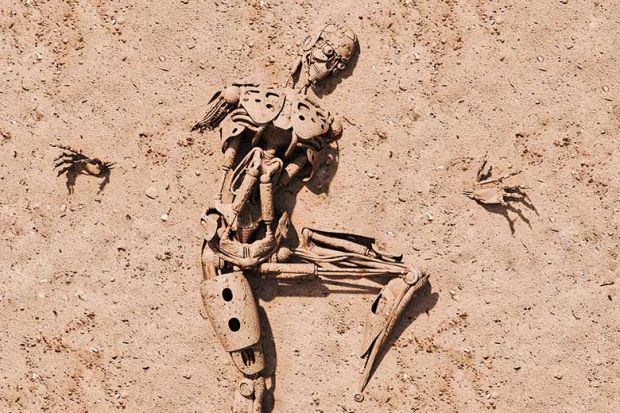On first reading the title of Gods and Robots, I thought I might learn something about ancient mechanics, as contrived by such outstanding mathematical minds as Archimedes of Syracuse; or that there would be treatment of that miracle of ancient engineering, the Antikythera mechanism. There is almost nothing like this in the book. A single closing chapter treats testimonia for actual mechanical devices. Archimedes gets one sentence; the Antikythera mechanism, one sentence and two passing mentions. Luckily, there is already a scholarly treatment of this ancient “computer”, with the capacity to predict the motions of heavenly bodies, in Alexander Jones’ A Portable Cosmos: Revealing the Antikythera Mechanism, Scientific Wonder of the Ancient World (2017).
Unlike Jones’ work, Adrienne Mayor’s book is a mishmash of undigested information and scattergun sources, some of which are indeed of tangential relevance for “robotics”, but many of which are not. Where there is discussion of robotics, it is frustrating. Does it actually tell me anything, say, to claim that the mythical bronze giant Talos conforms to Isaac Asimov’s “laws of robotics”, laws that, it should be remembered, are a fictional variation on the scientific “laws of physics”? Citation of Asimov’s “laws” no more means Talos was a “robot” than reference to modern experiments in genetics means that Medea’s rejuvenated ram is a prototype clone.
The book is peppered with such supposed “parallels”, which largely inhere in Mayor’s own use of terminology. She characterises the concept of artificial or enhanced life as “what the Greeks might have called [my italics] biotechne”; Pandora is referred to as an “evil fembot”. Talos is “a kind of ancient cyborg”. The calming drug mixed by Helen in the Odyssey is likened to the “drugs and other neurotechnological brain interventions” of modern military scientists. The book’s analogies verge on the absurd at times: “Are Stephen Hawking, Elon Musk, Bill Gates, and other prescient thinkers the Promethean Titans of our era?” (one seriously hopes not).
Most of Mayor’s “sources” are, in fact, about the interrelation between life and art. In fact, there is much potential for study in this area. An early concept of a “human mechanism” is implied, for instance, in a fragment of the Presocratic philosopher Empedocles, which draws an analogy between respiration and the operation of a klepsydra (water clock). Although it’s not mentioned by Mayor, this has been described as “a crucial document for ancient science”. The concept of humanity – indeed the universe itself – as a mechanism contrived by artisanship also underlies that central work of cosmology, Plato’s Timaeus. Mayor’s book is a missed opportunity for a rigorous study of a complex and rewarding area.
Emma Gee has lectured at the universities of Exeter, Sydney and St Andrews; she is now a freelance Classicist and writer. Her latest book, Mapping the Afterlife from Homer to Dante, is forthcoming from Oxford University Press.
Gods and Robots: Myths, Machines and Ancient Dreams of Technology
By Adrienne Mayor
Princeton University Press 304pp, £24.00
ISBN 9780691183510
Published 13 November 2018
后记
Print headline: Engineering the Titans of our age




